“Starting Your First Fish Tank: A Beginner’s Guide.”
Embarking on the journey of setting up your first fish tank is an exciting and rewarding endeavor. Whether you’re a newcomer to the world of aquariums or an experienced hobbyist looking for a manageable project, starting with a smaller tank is often a wise choice. In this guide, I’ll explore the essential steps to help you choose the right fish tank, equipment, and fish species for beginners. We’ll discuss the ideal tank size, whether to go with freshwater or saltwater, which fish to select, and the recommended equipment and fish food to ensure the success of your aquatic venture. So, let’s dive in and create a vibrant underwater world right in your home.
1. Type of Tank:
Freshwater vs. Saltwater: For beginners, freshwater tanks are recommended as they are easier to maintain and more forgiving. Saltwater tanks are more complex and require advanced knowledge.

When deciding between a freshwater and a saltwater tank for your initial aquarium as a beginner, it’s essential to consider the specific challenges and rewards that each option presents. Freshwater tanks stand out as the preferred choice due to their user-friendly and forgiving nature. Freshwater tanks offer several advantages for those new to fishkeeping. Firstly, they are known for their simplicity and stability, making them an ideal starting point. These tanks are easier to maintain because they typically maintain more consistent water conditions. As novice aquarists become accustomed to water testing and conditioning, the reduced likelihood of dramatic water parameter fluctuations can be highly beneficial. Moreover, freshwater setups tend to be more budget-friendly, with a wide range of affordable equipment and decorations suitable for this type of environment.


Lastly, freshwater fish species suitable for beginners are often hardier and more adaptable to variations in water quality and temperature, reducing the likelihood of stress or illness due to minor fluctuations. In contrast, saltwater tanks, while offering breathtaking beauty and unique marine life, are better suited for experienced hobbyists. They come with a higher level of complexity, particularly concerning water chemistry, cost, and expertise requirements. Maintaining stable water chemistry in a saltwater tank can be particularly challenging, as it necessitates meticulous monitoring of parameters such as salinity, pH, alkalinity, and calcium levels. Even slight deviations can significantly impact the health of marine life. Additionally, the cost of saltwater setups tends to be higher, considering the expense of quality marine equipment, live rock, and salt mixes. Saltwater tanks demand a deeper understanding of marine biology, filtration systems, and a comprehensive grasp of the nitrogen cycle. Furthermore, they often feature delicate and sensitive species, which are less forgiving of changes in water quality, making them a less suitable choice for beginners. Consequently, freshwater tanks are the recommended option for beginners due to their ease of maintenance, affordability, and the availability of hardy fish species, which establish a strong foundation for learning aquarium care basics and fostering a passion for fishkeeping. Saltwater tanks, while rewarding, are better explored once you’ve gained experience and confidence in maintaining a stable aquatic environment.
2. Equipment:
For a beginner’s aquarium, starting with a 10-gallon tank, or a larger one if space permits, equipped with essential components is a prudent choice. A reliable aquarium filter stands as a cornerstone, indispensable for preserving optimal water quality. The filter actively removes impurities, ensuring a healthy environment for your aquatic inhabitants. When it comes to maintaining a stable and comfortable habitat, especially for tropical fish,
a heater with a thermostat takes center stage. This heating element guarantees a consistent water temperature, a vital factor for the well-being of your fishy companions. Basic aquarium lighting generally suffices for a beginner’s tank, providing adequate illumination to showcase the underwater world without overwhelming complexity. Lastly, your choice of substrate is paramount, as it significantly impacts both aesthetics and the comfort of your fish. Opt for a substrate that aligns with your fish’s preferences, considering options like sandy bottoms for some species or gravel for others, ensuring their contentment in their new aquatic home.
3. Fish Selection:
For those new to the world of fishkeeping, several beginner-friendly freshwater fish species open up a world of aquatic wonder. Among these,
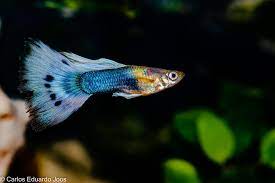
guppies stand out as vibrant, active, and incredibly easy to care for, with their mesmerizing array of patterns adding a burst of color to your tank. Platies,
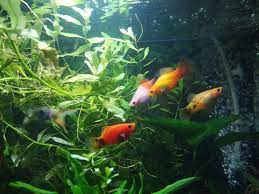
known for their vivacious and diverse color patterns, bring a sense of serenity with their peaceful temperament. Mollies, with their captivating color diversity and unique live-bearing nature,
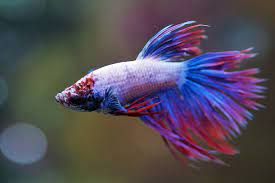
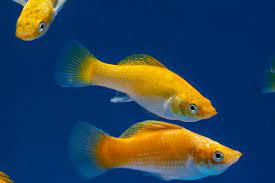
add both charm and intrigue to your aquatic community. Betta fish, celebrated for their vivid hues and low-maintenance requirements, make for stunning solo artists in your tank; it is important to note that only one male Betta should inhabit each tank to prevent conflicts. Neon tetras, despite their small size, captivate with their peaceful demeanor and striking appearance, particularly when illuminated by the right lighting. Lastly, the
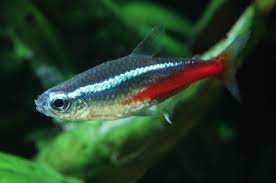
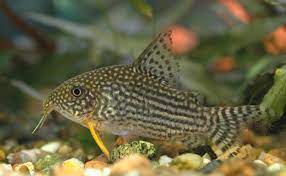
corydoras catfish, with their unassuming yet endearing presence, prove to be excellent additions, diligently cleaning the tank bottom while maintaining a remarkably peaceful disposition. These beginner-friendly fish species offer a delightful variety of colors, behaviors, and care requirements, allowing you to curate a harmonious and visually captivating underwater community.
4. Fish Food:
Selecting the right nourishment for your aquatic companions is pivotal to their well-being. High-quality fish flakes or pellets, tailored to the dietary needs of the specific fish species you have chosen, constitute the foundation of their diet. An array of reputable brands provides specialized food options designed to cater to the nutritional requirements of various fish types, ensuring their vitality and vibrancy.
To infuse variety and offer an occasional indulgence, contemplate introducing frozen or live food treats such as brine shrimp or daphnia. These delectable supplements not only tantalize your fish’s taste buds but also contribute to a more well-rounded diet, mimicking the natural diversity of their foraging habits in the wild. This occasional culinary indulgence elevates their nutritional intake and enriches their lives, further enhancing the overall health and happiness of your aquatic companions.
5. Maintenance:
Regular water changes (about 10-20% every 1-2 weeks) are essential to maintain water quality.
Invest in a water testing kit to monitor ammonia, nitrites, and nitrates.
Clean the filter as recommended by the manufacturer. Filters vary and so do cartridges. My preferred Nicrew filter above and cartridge is below
Maintain a consistent temperature and monitor it with a thermometer.
6. Acclimation:
Introducing new members to your aquatic community should always prioritize their comfort and well-being. Employing a drip acclimation method emerges as a prudent approach, as it facilitates a gradual adjustment to the tank’s water parameters for your incoming fish. This method ensures a smooth transition, reducing stress and the risk of shock that abrupt changes in water conditions can pose. The process involves slowly dripping water from your tank into the container carrying the new fish, allowing them to acclimate to the tank’s specific pH, temperature, and chemistry at their own pace. This patient approach mirrors the natural process of adapting to a new environment, easing the transition and setting the stage for a harmonious coexistence among your aquatic companions. It is a thoughtful practice that promotes the health and overall well-being of your fish, ensuring they thrive in their newfound aquatic abode.
7. Research:
Before buying any fish, research their specific care requirements, compatibility, and potential size. Ensure that the fish you choose are compatible with a 10-gallon tank.
It’s important to emphasize that success in the realm of aquarium-keeping is entirely within your reach, and it hinges on two vital attributes: patience and diligence. These qualities are your steadfast companions on this aquatic journey, ensuring that you not only create a thriving underwater ecosystem but also derive immense satisfaction from your endeavors.
As you embark on this adventure, I want to assure you that your patience will be rewarded. Rome wasn’t built in a day, and neither is a flourishing aquarium. Allow your tank the time it needs to establish its biological balance. This biological equilibrium is the key to a healthy and vibrant aquatic environment, where fish, plants, and beneficial microorganisms coexist harmoniously. Understand that this process may take some time as beneficial bacteria populations establish themselves, but the wait is worth it.
Diligence is your unwavering commitment to the well-being of your aquatic inhabitants. Regular water changes, precise maintenance of water parameters, and thoughtful observation of your fish’s behavior are all part of this dedication. By diligently caring for your tank, you’re ensuring that your aquatic community thrives and flourishes.
So, rest assured, with patience as your guiding star and diligence as your loyal companion, you are well on your way to success in the fascinating world of fishkeeping. As you witness your tank’s transformation and the unique personalities of your fish unfold, you’ll find deep fulfillment in this rewarding hobby. Embrace the journey, enjoy every moment, and revel in the beauty of your aquatic masterpiece as it blossoms before your eyes.






